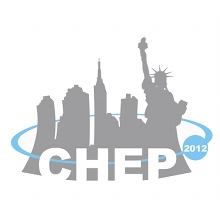Speaker
Jason Zurawski
(Internet2)
Description
Scientific innovation continues to increase requirements for the
computing and networking infrastructures of the world. Collaborative
partners, instrumentation, storage, and processing facilities are often
geographically and topologically separated, as is the case with LHC
virtual organizations. These separations challenge the technology used
to interconnect available resources, often delivered by Research and
Education (R&E) networking providers, and leads to complications in the
overall process of end-to-end data management.
Capacity and traffic management are key concerns of R&E network
operators; a delicate balance is required to serve both long-lived, high
capacity network flows, as well as more traditional end-user activities.
The advent of dynamic circuit services, a technology that enables the
creation of variable duration, guaranteed bandwidth networking channels,
allows for the efficient use of common network infrastructures. These
gains are seen particularly in locations where overall capacity is
scarce compared to the (sustained peak) needs of user communities.
Related efforts, including those of the LHCOPN operations group and the
emerging LHCONE project, may take advantage of available resources by
designating specific network activities as a "high priority", allowing
reservation of dedicated bandwidth or optimizing for deadline scheduling
and predicable delivery patterns.
This paper presents the DYNES instrument, an NSF funded
cyberinfrastructure project designed to facilitate end-to-end dynamic
circuit services. This combination of hardware and software innovation
is being deployed across R&E networks in the United States at selected end-sites
located on University Campuses. DYNES is peering with international
efforts in other countries using similar solutions, and is increasing
the reach of this emerging technology. This global data movement
solution could be integrated into computing paradigms such as cloud and
grid computing platforms, and through the use of APIs can be integrated
into existing data movement software.
Summary
A description and overview of a distributed virtual instrument for the dynamic creation of end-to-end circuits to support distributed scientific collaborations.
Authors
Eric Boyd
(Internet2)
Harvey Newman
(California Institute of Technology (US))
Jason Zurawski
(Internet2)
Paul Sheldon
(Vanderbilt University (US))
Shawn Mc Kee
(University of Michigan (US))
Co-authors
Aaron Brown
Prof.
Alan Tackett
(VANDERBILT UNIVERSITY)
Artur Jerzy Barczyk
(California Institute of Technology (US))
Azher Mughal
(California Institute of Technology (CALTECH))
Mr
Ben Meekhof
(University of Michigan)
Bobby Brown
(Vanderbilt)
Jeff Boote
(Internet2)
Mathew Binkley
(Vanderbilt)
Ramiro Voicu
(California Institute of Technology (US))
Robert Ball
(University of Michigan (US))
Stephen Wolff
(Internet2)
Tom Lehman
(ISI)
Xi Yang
(ISI)
sandor Rozsa
(California Institute of Technology (CALTECH))
